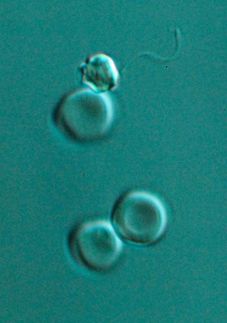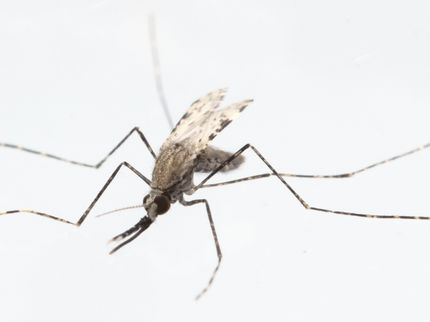Driving mosquito evolution to fight malaria
One of the frustrations of fighting malaria is that mosquitoes evolve resistance to the insecticides used to kill them.
Now researchers from Exeter University in the United Kingdom and the University of California, Berkeley, propose using insect repellents along with insecticides to extend the lifetime of the insecticides we have today and, paradoxically, evolve mosquitoes with greater aversion to the repellent.
Because insecticides don't kill 100 percent of mosquitoes, those with some resistance survive and come to dominate the population, rendering the insecticide ineffective.
Repellents, which can be as simple as a scent that insects avoid, can help protect humans by keeping homes free of malarial mosquitoes. Many of the mosquitoes that carry the malaria parasite have evolved to bite humans indoors at night.
Currently, however, there are no available repellents that are cheap, safe and easy to use, and able to protect an entire building or property. Existing options are ineffective or too expensive for use in developing countries. Scientists are now trying to develop suitable repellents, in part because studies have shown that the insecticide DDT, once the scourge of malarial mosquitoes, may have been effective because it repelled as well as killed mosquitoes.
Even with a highly effective repellent, however, mosquitoes could evolve to become less repelled, since those forced to feed outdoors are at greater risk.
"If you combine these two, you should get better repellents and you should get a slower resistance to the insecticide, so it will last longer or forever," said population biologist Michael Boots, a UC Berkeley professor of integrative biology.
First author Penny Lynch, a postdoctoral fellow with joint appointments at the two universities, says that the proposed technique doesn't require an initially very effective repellent to work. A mediocre repellent will drive mosquitoes to evolve so that the repellent becomes more effective.
"That is the premise," she said. "Evolution should be selecting for the ones that are repelled, because they don't get killed by the insecticide."
As fewer mosquitoes encounter the insecticide, there is less pressure for the mosquitoes to develop resistance to it.
"The idea is, if you combine a spatial repellent that is not particularly good initially, with an effective insecticide in the house, then a certain proportion of the mosquitoes will be repelled and some proportion will go inside the house and get killed," Boots said. "So populations that aren't going into the house are under selection for increased repellence or deflection, and as that happens you get less selection for insecticide resistance."
Insecticide-impregnated bed nets
Thanks to work over the past 15 years, much of it funded by the Gates Foundation, residents of many countries in Africa and Asia now have access to bed nets impregnated with insecticides such as pyrethroid compounds. This has helped drive malaria cases down almost to levels achieved decades ago with DDT, Boots said. Now that DDT has been phased out almost everywhere, however, there are fewer fallback options when current insecticides become ineffective because of resistance.
Lynch noted that switching to new and often more expensive insecticides means that fewer homes are protected and more people die.
The idea that a repellent/insecticide combination could drive mosquito evolution to yield a sustainable malaria control strategy came to Lynch as she was working on her Ph.D. thesis on insecticides that kill older mosquitoes, the ones that actually spread malaria. A financial modeler by training, she began thinking about the genetic fitness of mosquitoes, and how to manipulate that.
She teamed up with Boots to use mathematical models of evolutionary competition between vectors and hosts -- the malaria parasite and the mosquito, for example -- to test whether the strategy would work.
"We are interested in this whole question of how we can use models to look at clever ways of implementing control mechanisms," Boots said.
One advantage of the proposed strategy is that it can be implemented without interrupting current mosquito control programs, such as spraying insecticides around homes and using bed nets. A repellent could easily be applied in a home at the same time as insecticides are sprayed.
Boots and Lynch plan to team up with scientists in Africa or Asia to test the hypothesis that mosquitoes can actually evolve to be more repelled by mediocre repellents, and determine what levels of effectiveness are necessary for both repellent and insecticide. The strategy may differ depending on the type of mosquito in a region and its feeding habits, such as whether it feeds on animals also, or exclusively on humans.
"We know quite a bit about mosquitoes and insecticide resistance, but we don't know much about the way deflection will evolve," Boots added. "The purpose of the modeling was to determine if the strategy is credible, and whether we should try it in the field. We hope to do that."
DDT's effectiveness against mosquitoes may actually be proof that the hypothesis works.
"DDT was used so widely that it is very interesting to consider whether it was always an effective repellent or has become so, and is a nice example of an evolved spatial repellent," Lynch said. "It would make perfect sense for that to be the case."






















































